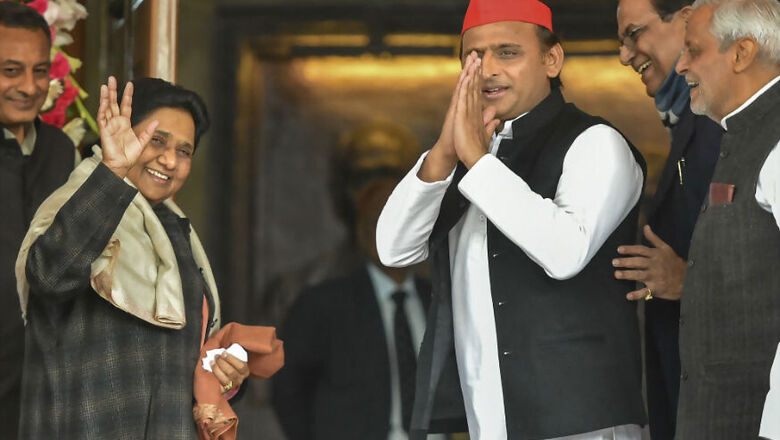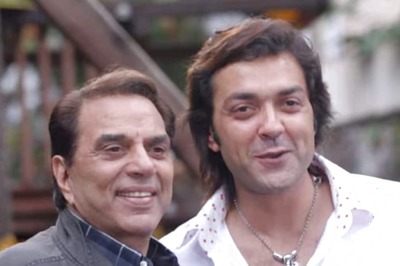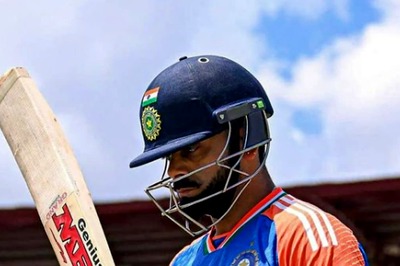
views
Lucknow: The electoral campaigns have picked up pace in the crucial belt of west Uttar Pradesh, which is going to polls in phase one and two on April 11 and 18. The campaign styles of the two major political stakeholders -- the BJP and the SP-BSP-RLD alliance – are point at a strong emerging contrast.
While the BJP is carpet-bombing the region with rallies of its stalwarts Prime Minister Narendra Modi, party president Amit Shah and UP chief minister Yogi Adityanath, the Opposition will hold its first mega rally only on April 7 in Saharanpur -- just a day before the poll campaign will end for phase one. The Congress is also going slow. While Priyanka Gandhi had been extensively touring east UP, neither she nor party president Rahul Gandhi have so far ventured into the west.
The question therefore is, is it the Opposition’s weakness or a calculated strategy? If it’s a strategy what’s the rationale behind it? On the condition of anonymity, a senior Samajwadi Party leader told News 18: “The reason why Akhilesh Yadav and Mayawati had so far not started rallies in the phase one region of west UP is the same as one that had kept Akhilesh away from Kairana last year when bypolls were being held there." Akhilesh had not once campaigned in the crucial Kairana bypolls, leaving the task to second-rung leadership of the party. The intention was to avoid the elections from becoming Hindu vs Muslims.
Reliable sources in the SP-BSP camp say the alliance has deliberately chosen to go slow with high decibel campaign to give the BJP an opportunity to communally polarise the election. The leaders of the alliance have been highlighting the comments made by the BJP leaders, especially Uttar Pradesh chief minister Yogi Adityananth, over the past few days during rallies in Meerut, Gaziababad and Saharanpur.
They say Akhilesh and Maywati’s physical absence in the region so far had devoid the BJP of projecting the elections on communal lines. A big reason for it would have been the natural convergence of large number of minority voters at any such rally which might have been held so far. The minorities this time constitute a natural voting column for the SP-BSP-RLD alliance.
This, coupled with the fact that almost the entire region going to polls in phase one and a larger portion of phase two has a strong presence of minority vote bank. Over the years, elections here had taken place on communal lines. The 2014 Lok Sabha polls in the In back drop of Muzzafarnagar riots of 2013 and the 2017 state elections being the cases in point.
In all the eight constituencies going to polls in phase one on April 11, the average minority population is estimated to be above 25 percent. As per the available statistics, Muslim voters in Kairana are 26 percent. They constitute for 14% voters in Gautam Budh Nagar, around 31% in Merrut, 19.5% in Bagpat, 31% in Muzzafarnagar, 38% in Saharanpur, 19% in Ghaziabad and around 32.5% in Bijnor.
Among the constituencies going to polls in phase two, Nagina has around 42 percent Muslim voters. In Amroha, their percentage is above 35 and in Bulandshahar and Aligarh it is around 15 percent.
With minorities and a strong section of Backwards and Dalits firmly in their saddle, alliance strategists say that the SP-BSP’s focus should be on a door-to-door campaigning through local workers and leaders. High-profile rallies and leaders could well be playing into the BJP’s hands.
“Amid Yogi Adityanath’s communal rhetoric such as equating Congress leader Imran Masood to Pakistan-based terrorist Azhar Masood or trying to bat for subtle polarisation on pretext of surgical strikes during a rally in Gaziabad, the best strategy is to avoid a direct confrontation," says a senior leader of the Samajwadi party.
So while Modi is yet again expected for his second rally in Saharanpur constituency on April 5, Adityanath will be addressing rallies in Kairana, Bagpat and Gaziababad on Wednesday. Apart from these big names, UP’s deputy CM Keshwav Maurya and other senior leaders have also been addressing rallies in west UP constituencies.
In response, Akhilesh and Mayawati will be addressing their first and the only joint rally in phase one on April 7 in Deoband area of Saharanpur. Although the choice of the location for first rally might raise questions, the reason behind Deoband as a choice is more to do with local factors of Sahranpur. Where Congress’s Imran Masood is a serious contender against the BJP and Opposition’s Hazi Fazlur rehman of the SP-BSP alliance. The motive of the Deoband rally will be to prevent the exodus of minority vote towards the Congress.
In this closely contested electoral battle, in which the alliance seems to be the natural choice for minorities and the BJP remains confident of support from the upper caste Hindu communities. It is the non-upper caste Hindu vote bank -- comprising the OBCs and Dalits -- that will emerge as the decisive ‘X factor’.
Will the Opposition’s strategy pay dividends? A lot will depend on how much influence is the saffron party is able to cast on this section of voters, especially on the Jats and Gurjars which constitute the maximum chunk of OBC votes in these constituencies.



















Comments
0 comment